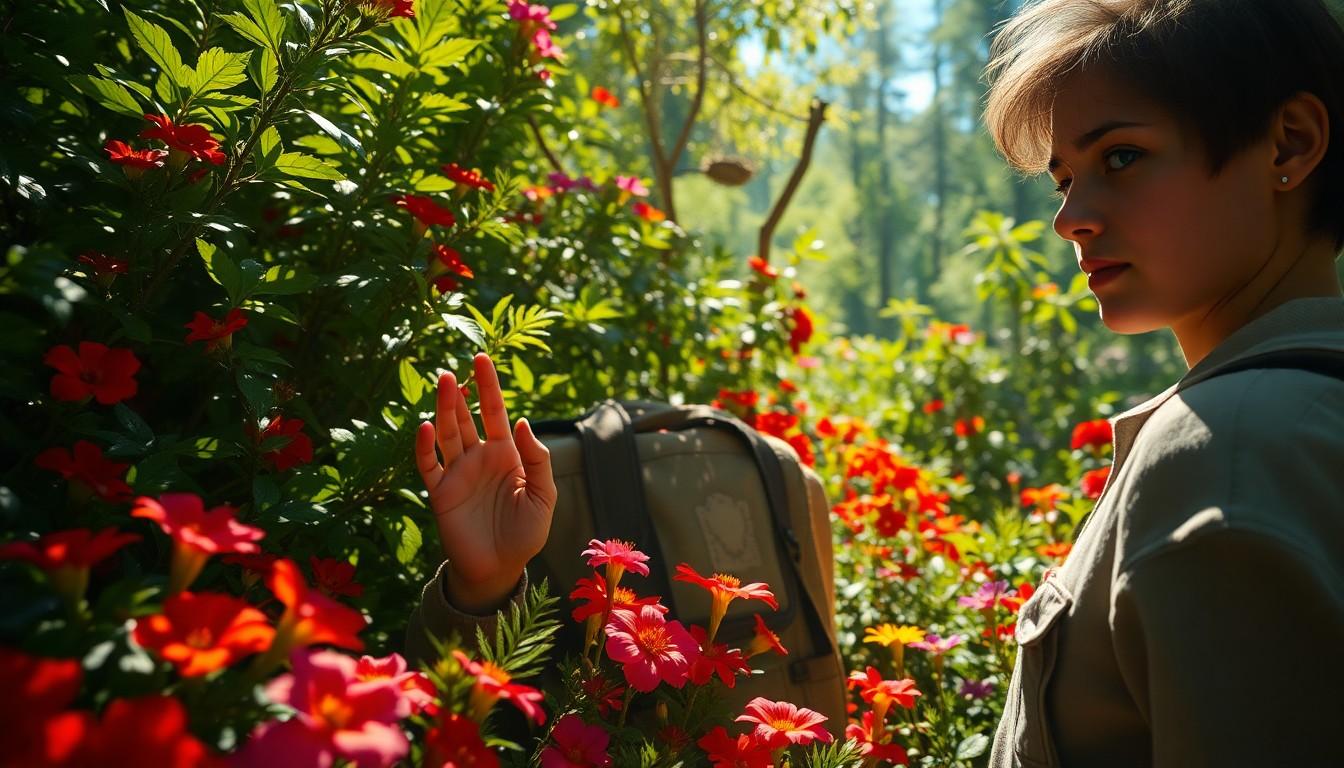Koztaldihyonsia: Uncover the Extraordinary Sensory Phenomenon Transforming Perception

In the quirky world of unusual phenomena, koztaldihyonsia stands out like a neon sign in a black-and-white movie. This captivating concept has puzzled experts and intrigued enthusiasts alike, making it a hot topic for those who love to explore the bizarre and the unexpected. If you’ve ever wanted to dive into a realm where science meets the surreal, you’re in for a treat.
Imagine a place where the ordinary twists into the extraordinary, and everyday logic takes a backseat. Whether you’re a curious mind or just someone looking to impress at dinner parties, understanding koztaldihyonsia can add a dash of flair to your conversations. Buckle up for a journey that’s equal parts enlightening and entertaining, and discover why this phenomenon is worth your attention.
Overview of Koztaldihyonsia
Koztaldihyonsia represents a unique occurrence that continues to intrigue many. The intersection of science and the surreal captivates both enthusiasts and experts alike.
Definition and Origin
Koztaldihyonsia describes an extraordinary phenomenon characterized by unexpected sensory experiences. This term emerges from a blend of distinct linguistic roots, reflecting its multifaceted nature. Its origin can be traced back to studies highlighting unusual cognitive responses and sensory perceptions. Academic discussions often revolve around its implications in neuropsychology, signaling potential links to altered states of consciousness. Since its introduction, scholars have explored various contexts where koztaldihyonsia surfaces, including art, literature, and psychology.
Taxonomical Classification
Koztaldihyonsia fits within a broader framework of anomalous phenomena. Researchers categorize it under neurophenomena, where it intersects with cognitive psychology and sensory perception studies. This classification allows for focused inquiries exploring similarities and differences among related occurrences. Specific subtypes emerge based on variations in sensory experiences or cognitive responses. Scholars also examine its relationship with other phenomena, such as synesthesia, enhancing the understanding of human perception. The classification framework aids in the ongoing research and analysis, guiding experts toward deeper insights.
Habitat and Distribution

Koztaldihyonsia exhibits a fascinating relationship with specific environments. The phenomenon thrives in conditions that promote unique sensory experiences, often influenced by specific stimuli within the surroundings.
Natural Habitat
Optimal conditions for koztaldihyonsia occur in diverse environments, such as dense forests and coastal areas. Dense forests provide abundant sensory inputs, enabling rich experiences. Coastal regions offer varying auditory sensations, enhancing the phenomenon’s effects. Light levels also play a crucial role; areas with filtered sunlight encourage cognitive alterations. These natural habitats foster a complex interplay of sensory stimuli significant for understanding koztaldihyonsia’s emergence.
Geographic Range
The geographic distribution of koztaldihyonsia spans multiple continents, appearing in both urban and rural settings. Regions in North America and Europe display higher incidences due to their diverse landscapes. Urban environments, with their eclectic sounds and sights, contribute significantly to the phenomenon. Meanwhile, remote areas present unique opportunities for studying its various forms. Documenting cases across these regions reveals consistent patterns that deepen understanding of this compelling phenomenon.
Morphological Characteristics
Koztaldihyonsia exhibits unique physical traits that set it apart from typical sensory phenomena. These characteristics provide insight into its complex nature and variations.
Physical Appearance
The most striking feature of koztaldihyonsia involves its manifestation during sensory episodes. Individuals experiencing this phenomenon often report altered physical sensations that accompany visual and auditory stimuli. Examples include heightened perception of shapes, sounds, and movements. Specific appearances may include shimmering lights or vivid patterns emerging in peripheral vision. These variations contribute to profound sensory experiences, often becoming a focal point for observers.
Color Variations
Color changes play a crucial role in koztaldihyonsia experiences. A spectrum of hues can manifest, with bright and vivid colors frequently described during episodes. Some individuals may experience richer saturation and vibrancy, while others note subtle tonal shifts that shift with environmental context. These color variations may guide emotional and cognitive responses, influencing the overall experience significantly. Prolonged exposure to these intensified color sensations reinforces their impact on consciousness.
Behavioral Traits
Behavioral traits of koztaldihyonsia encompass a range of fascinating characteristics related to feeding habits and social structure.
Feeding Habits
Koztaldihyonsia exhibits unique feeding habits directly influenced by its sensory experiences. Individuals often seek out environments rich in sensory stimuli, such as areas with diverse flora and fauna. Notably, they exhibit preferences for highly fragrant plants, which enhance cognitive engagement. Sensory-driven choices lead to heightened enjoyment of specific textures and flavors, creating a distinctive culinary experience. Often, individuals report unusual cravings for vibrant fruits and aromatic herbs that complement their altered sensory perceptions. Variations in feeding practices can also correlate with geographic location, as local availability of certain plants may affect dietary preferences.
Social Structure
Koztaldihyonsia demonstrates an intriguing social structure characterized by strong communal ties. Groups form based on shared sensory experiences, fostering deep connections among individuals. Communication within these groups often relies on heightened perceptual expressions, allowing members to convey emotions more vividly. Social interactions thrive in environments that stimulate sensory engagement, enhancing group dynamics. Interestingly, these clusters often follow seasonal patterns, with gatherings peaking during times of sensory abundance. Cooperation among individuals further promotes the exploration of novel sensory experiences, reinforcing communal bonds and collective understanding of the koztaldihyonsia phenomenon.
Significance in Ecosystems
Koztaldihyonsia plays a vital role in various ecosystems, deeply influencing biological interactions and overall health.
Role in Food Webs
In food webs, koztaldihyonsia acts as both a consumer and a potential prey species. It feeds on nutrient-rich plants, contributing to primary production by recycling nutrients. By consuming these plants, it facilitates energy transfer to higher trophic levels. Predators depend on koztaldihyonsia for sustenance, supporting populations of higher-order species. The interactions between these organisms create a dynamic balance within their habitats, showcasing how koztaldihyonsia supports diverse life forms and maintains ecological stability.
Contribution to Biodiversity
Koztaldihyonsia enhances biodiversity through its unique sensory experiences and adaptive behaviors. It fosters varied interactions among species, allowing for the development of specialized niches. This phenomenon encourages the coexistence of numerous organisms, promoting genetic diversity within ecosystems. Altered sensory experiences experienced by koztaldihyonsia can drive evolutionary adaptations, enriching the gene pool. Each interaction it fosters among species amplifies ecosystem resilience, ensuring that habitats thrive amid environmental changes.
Conclusion
Koztaldihyonsia opens a fascinating window into the extraordinary aspects of human perception and interaction with the environment. Its unique sensory experiences not only enrich individual lives but also play a pivotal role in maintaining ecological balance. Understanding this phenomenon offers valuable insights into cognitive responses and highlights the importance of diverse habitats. As research continues to unfold, the implications of koztaldihyonsia promise to deepen our appreciation for the complexities of perception and the interconnectedness of life. Embracing these insights can lead to more engaging conversations and a greater awareness of the remarkable world around us.



